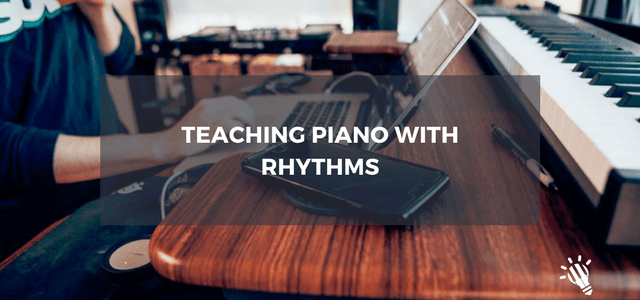Practising in rhythms is, without a doubt, my No 1 practice tip for students!
Why?
One simple reason: it reduces the amount of time that they need to spend practising repetitive sequences such as scales and scale passages, arpeggios, broken chords and any kind of fast quaver or semiquaver movement. Students will be able to play complex passages more quickly and with more confidence.
The use of rhythms in piano teaching is controversial. I vividly remember Boris Berman denouncing it as a practice method at a previous ANAM piano festival, asking, “Why would you want to consciously add rhythms to something which you eventually want to play straight?”.
One answer is, “Because playing in rhythms forces the brain to switch-on and focus by making things harder”.
At first, rhythms make passages more difficult than they would be to play straight. This increases a student’s concentration and develops far more certainty in finger motions and patterns. Accenting different notes according to each rhythm pattern strengthens each finger in turn and improves coordination, finger dexterity and independence.
Lastly, increased concentration and a higher level of difficulty means less practice time before passages, sequences and scales are mastered – guaranteed!!
The other great thing is that rhythms make otherwise fairly dull scale practice in particular more interesting! We all know about playing scales hands sep/tog, contrary, in 3rds/6ths, starting at the top, cresc/decresc, staccato, eyes shut, etc. etc. But to do these in combination with various rhythms, just adds another whole level of challenge. More challenge = more focus = better results!
These are the most common rhythms I use with my students when the content to be worked on is based on divisions of twos and fours:
I also use:
If the divisions are in threes (ie. extended triplet passages), then use:
These are the way I use rhythms in practice with my beginner and intermediate students. By the time students get to the upper levels and are playing advanced repertoire, I still recommend rhythm practice when I can see that it will help, but ultimately this is up to the student as they take more responsibility for their practice.
I find however that when rhythm practice has been introduced to students over a few years and they have seen its success first-hand, it becomes quite natural for them to adopt it as part of their routine without guidance.
I’d be interested in other people’s ideas/comments!

Ann Grogan says:
Wonder if you have any videos relevant to teaching the non-professional amateur late-life senior student? Many of us flocked (back to) to the piano during Pandemic, as I did. Am also seeking a new inperson piano teacher cognizant of the unique needs of the older adult amateur (early intermediate), in San Francisco and would appreciate any referrals. (Referred by Prof. Noa Kageyama). Thanks. In music love, Ann
Tim Topham says:
Hi Ann – you’d probably like some of my YouTube videos. EG. https://www.youtube.com/watch?v=tiTbvIVzzBc or https://www.youtube.com/watch?v=Du01k72I7y0. There are more in the series, but try those ideas out!
pezzi di ricambio per auto says:
I really like it when individuals get together and share views.
Great site, keep it up!